Stained glass windows have been around a good deal longer than Glasshouses, yet it would seem that the two have something to offer each other.
Wafting around the National Botanic Garden of Ireland in September I was fulfilling a bucket list item; I’d long known about but never visited the graceful Curvilinear Range and its partner glasshouse, The Palm House, that sit at the heart of the nearly 20 acre garden. The first is a most elegant structure, designed and built by Richard Turner, the pre-eminent iron master, known for his commanding ironwork embellishments to Georgian Dublin. Six years in the making, it opened in 1849 with a visit from Queen Victoria to mark the event. For my visit, the end of September is probably not the best time to see the garden, yet there was plenty to enjoy despite uncertain weather and nasty storms threatening. But a bracing cup of tea and a fluffy, fruit-packed scone in the garden’s tearoom compensated.
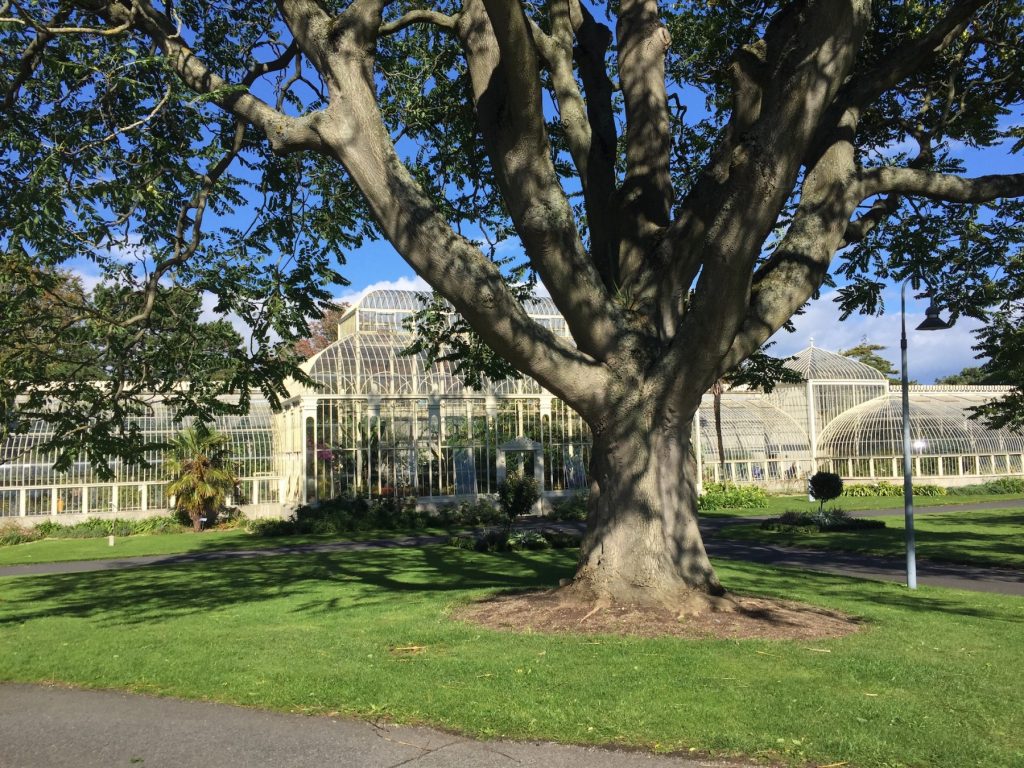
A newspaper lay open on the café table to an article about the new stained glass window recently installed in Westminster Abbey, London. Designed by David Hockney to celebrate Elizabeth II’s long reign, he took inspiration from the collage work of Henri Matisse. Some love it, some hate it. But its depiction of a north-of-England hedgerow using amoebic forms express the plant colors and textures challenges the viewer, and sets up an uneasy tension between it and the medieval and Victorian stained glass windows illuminating the great abbey. Hockney’s window also seems to have challenged a number of journals to produce articles about stained glass and its many and varied applications; I couldn’t pick one up without reading about the undeniable beauty of stained-glass window panes. It seems that an ancient art form is the next new thing in interior design. With that in mind, and the botanic garden’s glasshouses in view, inspiration struck: how fabulous would it be to have stained glass windows set into a home Glasshouse? Who am I to quibble with my fellow journalists?
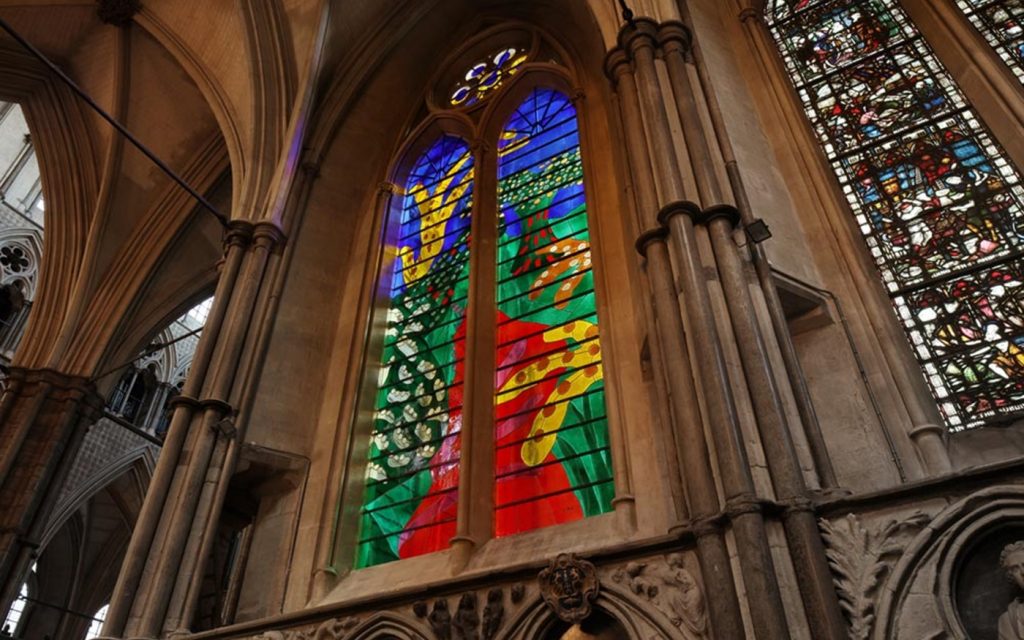
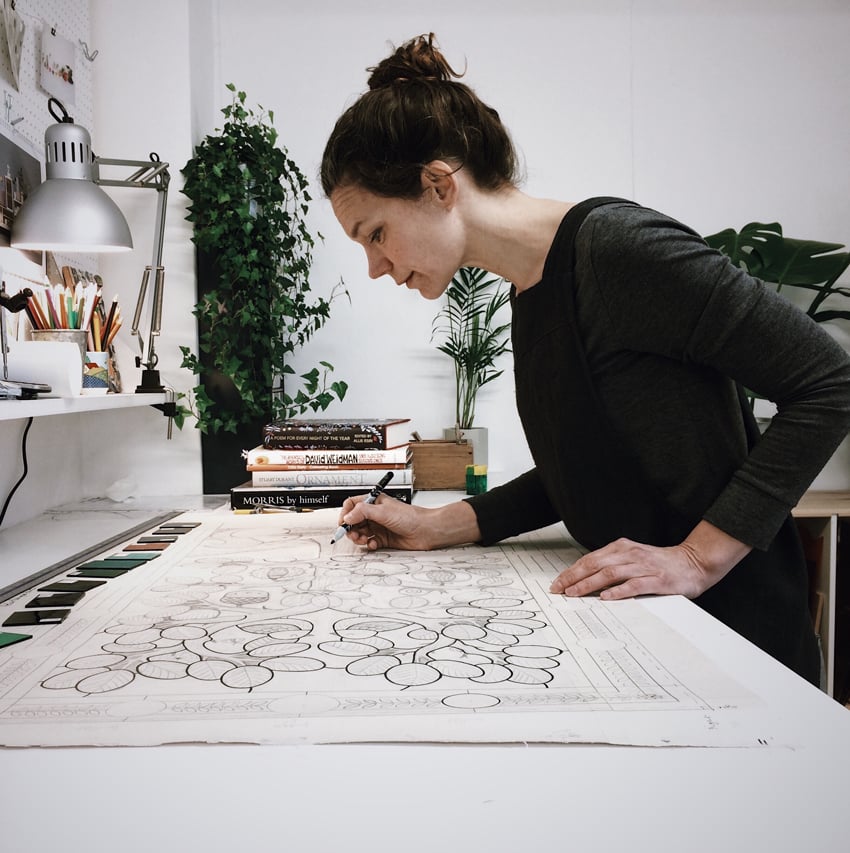
One of the articles led me to the work of stained glass artist, Flora Jameison, whose studio is in Dorset, England. As well as working on historic restoration projects, Flora works to private commissions, creating stained class windows and panels as well as small commemorative pieces, like a beautiful panel capturing a bride’s bouquet, which can be seen with other projects, on her website. Another commission, shown above, was for a door and sidelights for a mid-century modern house. The commission drew on her knowledge of historic styles and nature, as the design had to mesh with the home’s existing Victorian glass, but also reference the client’s love of both modernist textile designers and an old apple tree in the home’s orchard.
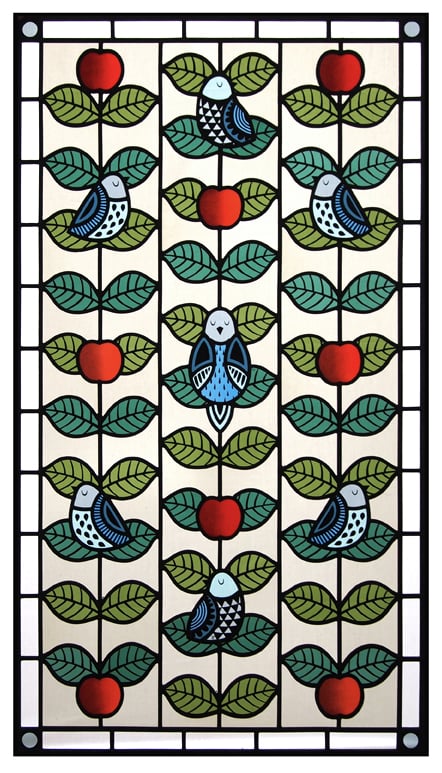
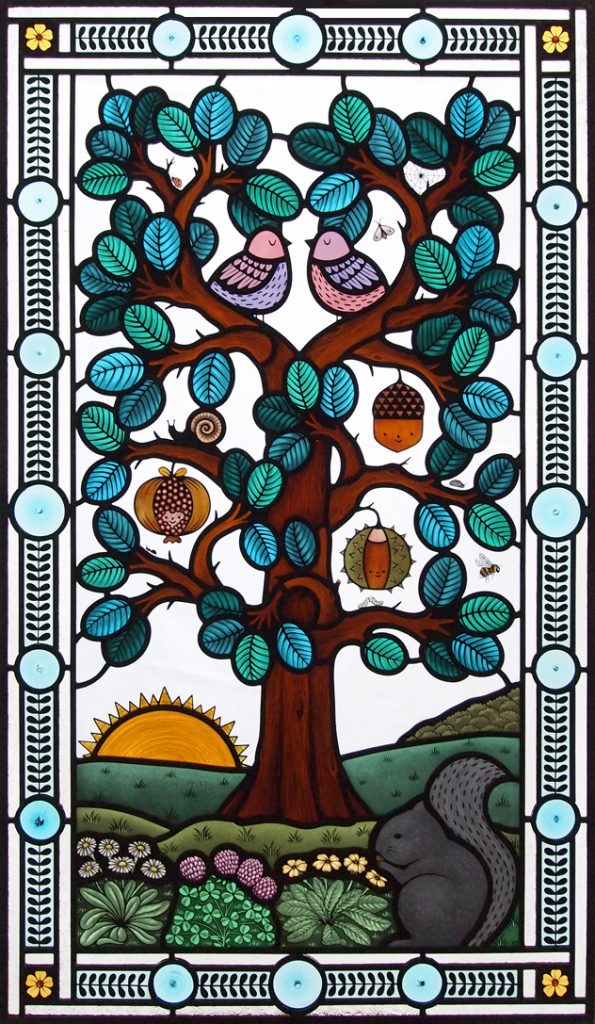
The ‘Brilliant Idea’ caught Flora’s interest. Naturally, all I could see was how sunlight transfigured by the stained glass colors and graphic depictions of nature would enhance the beauty of the plants in my imagined Glasshouse interior. But Flora dug deeper, pointing out the practicalities of installation, noting particularly that while the glass used in a window may be only 3-4mm thick, the leading, which holds the picture pieces together and borders the edge, adds considerably to the thickness of the finished piece, typically taking it up to 8mm. This could complicate having a glass panel installed in a preformed structure. However, where there’s a will there’s a way, and Flora agreed that hanging a framed stained glass panel within the Glasshouse structure could work, and the exterior glass would act as a shield protecting the art glass panel. Perhaps the next step is to consult with the craftsmen at Hartley Botanic? After all, suiting traditional forms of garden architecture to contemporary lifestyle is their forte, while dreaming seems to be mine.
For a breathtaking use of colored glass, watch the video below in which the architect describes the kaleidoscopic glazing of the Museum at Prairiefire, Overland, Kansas.
© Ethne Clarke, 2018


